Master the use of RSI Bands in trading by overlaying them with Bollinger Bands for enhanced strategies. Understand overbought and oversold conditions indicated by the upper and lower bands, respectively. Interpret RSI readings above 70 as overbought and below 30 as oversold. Utilize divergence patterns for trend reversals and entry/exit points. Confirm trends with RSI values above or below 50. Apply RSI bands at 70 and 30 levels, identifying trade opportunities. Combine RSI with Moving Average, MACD, Fibonacci levels, Volume indicators, and Ichimoku Cloud for thorough analysis. Place stop-loss orders strategically to manage risk. Discover more about mastering RSI Bands for trading success.
Understanding RSI Bands in Trading
Understanding RSI Bands in Trading is crucial for traders looking to effectively analyze market trends and make informed trading decisions based on technical indicators. RSI bands are formed by overlaying Bollinger Bands onto the Relative Strength Index (RSI) chart. This combination provides traders with a visual representation of potential trend reversals and market volatility.
The upper RSI band signifies overbought conditions, indicating a potential reversal to the downside, while the lower band suggests oversold levels, signaling a possible upward reversal. Integrating RSI bands with price action analysis offers a thorough view of market dynamics, enhancing the accuracy of trading decisions and risk management strategies.
Interpreting RSI Readings Effectively
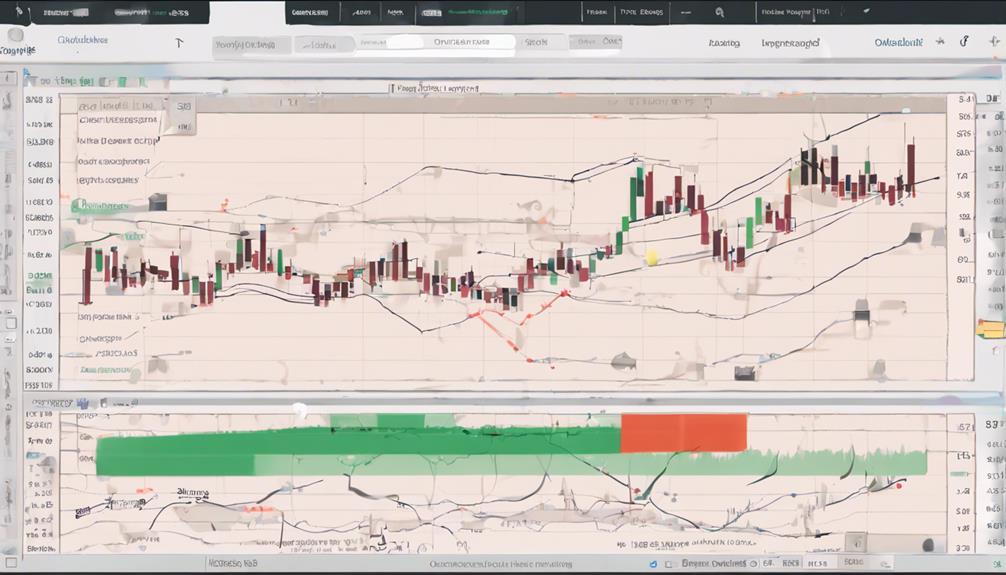
Analyzing RSI readings above 70 to identify potential overbought market conditions and readings below 30 for potential oversold conditions is vital in trading strategies.
Additionally, recognizing divergence patterns in RSI can signal upcoming trend reversals, aiding traders in decision-making processes.
The accurate interpretation of these RSI signals is essential for confirming trends and determining ideal entry and exit points in the market.
RSI Overbought Signals
When the Relative Strength Index (RSI) rises above 70, it indicates overbought market conditions, suggesting a potential impending reversal. Traders view overbought RSI levels as a sign that the price may be due for a pullback or correction.
Additionally, they often scrutinize for bearish divergences between price movements and RSI readings to confirm potential trend reversals. Utilizing overbought signals on the RSI can assist traders in identifying selling opportunities within the market.
Understanding the implications of RSI overbought signals is essential for traders to anticipate possible market reversals and adjust their trading strategies accordingly. By incorporating these insights, traders can enhance their ability to make informed decisions and maximize their trading performance.
RSI Oversold Signals
With RSI readings below 30 indicating an oversold market condition, traders can potentially identify favorable buying opportunities in the market. Recognizing these oversold conditions through RSI readings can suggest a possible reversal from a downward trend, signaling a chance for prices to bounce back.
Traders often view RSI levels below 30 as a sign that the asset may be undervalued, presenting an opportunity for a price rebound. Combining the identification of oversold RSI signals with other technical indicators can enhance trading strategies by providing a more thorough view of the market dynamics.
RSI Divergence Patterns
RSI Divergence patterns serve as critical indicators for traders, revealing potential trend reversals through the analysis of price movement and RSI direction variance. When observing RSI Divergence patterns, traders should pay close attention to:
- Bullish Divergence: Occurs when price makes lower lows while RSI makes higher lows, indicating a potential uptrend.
- Bearish Divergence: Happens when price forms higher highs while RSI forms lower highs, suggesting a possible downtrend.
- Trend Reversals: RSI Divergence patterns are valuable for identifying shifts in market momentum and anticipating changes in trends.
- Confirmation Tool: Traders utilize RSI Divergence as a confirmation tool for determining entry and exit points in their trading strategies.
Understanding these divergence patterns can enhance trading strategies by providing insights into potential market movements and trend shifts.
Identifying Overbought and Oversold Conditions
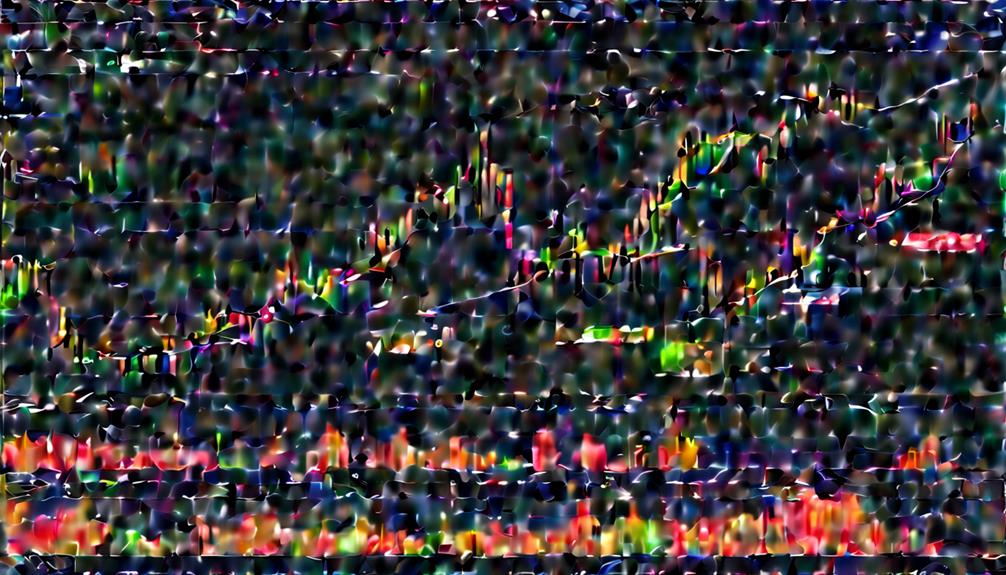
Identifying overbought and oversold conditions is essential in trading strategies, particularly when using RSI bands.
Overbought signals, indicated by RSI values above 70, suggest potential price exhaustion and a possible reversal.
Conversely, oversold indicators, seen when RSI values drop below 30, may signal opportunities for market entry as trends could reverse.
Overbought Signals Importance
The significance of recognizing overbought signals in trading lies in their ability to pinpoint potential price reversals when RSI values surpass the 70 threshold. When traders identify overbought conditions, they can anticipate downward price movements and make informed decisions.
RSI readings above 70 indicate possible overvaluation in the short term, prompting traders to contemplate selling or taking profits. Monitoring overbought signals with RSI bands is essential for effective risk management and decision-making.
Oversold Indicators Significance
Recognizing oversold indicators in trading is vital to seizing potential buying opportunities and anticipating market reversals efficiently. When the Relative Strength Index (RSI) falls below 30, it indicates an oversold condition, suggesting that the asset may be undervalued. This presents traders with a chance to enter the market at a potentially advantageous price point.
RSI Bands Application Techniques
Utilizing RSI bands in trading strategies provides a systematic approach to identifying overbought and oversold conditions for making strategic trading decisions.
- Setting RSI bands at 70 (overbought) and 30 (oversold) levels helps signal potential trade opportunities.
- Overbought conditions are identified when RSI breaches the upper band, indicating potential sell opportunities.
- Oversold situations are recognized when RSI falls below the lower band, suggesting possible buy opportunities.
- RSI bands assist traders in gauging market extremes, aiding in the determination of best entry and exit points based on overbought and oversold levels.
Utilizing Divergence Signals With RSI
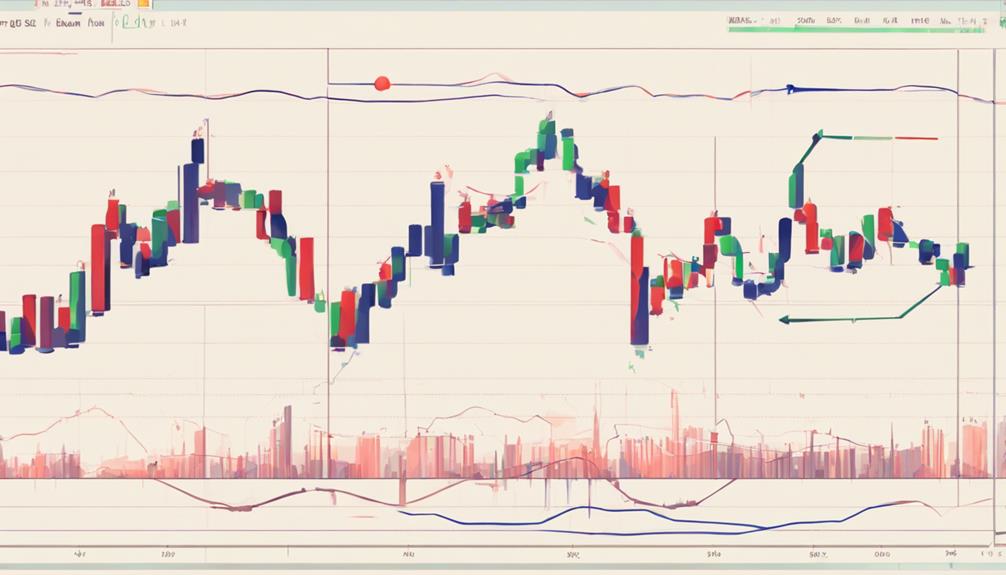
When analyzing market trends with RSI, paying close attention to divergence signals can provide valuable insights for strategic decision-making in trading. RSI divergence signals occur when there is a disconnect between price movement and RSI direction, which can indicate potential trend reversals.
Bullish divergence is observed when the price forms lower lows while RSI forms higher lows, suggesting a potential uptrend in the market. On the other hand, bearish divergence occurs when the price creates higher highs while RSI forms lower highs, signaling a possible downtrend.
These divergence signals with RSI serve as early warnings of shifts in market momentum, offering traders opportunities for strategic entries and exits. By integrating divergence signals with RSI, traders can enhance their trading strategies by adding a layer of confirmation for trend reversals and making informed trade decisions based on these divergence patterns.
Implementing RSI in Trend Confirmation
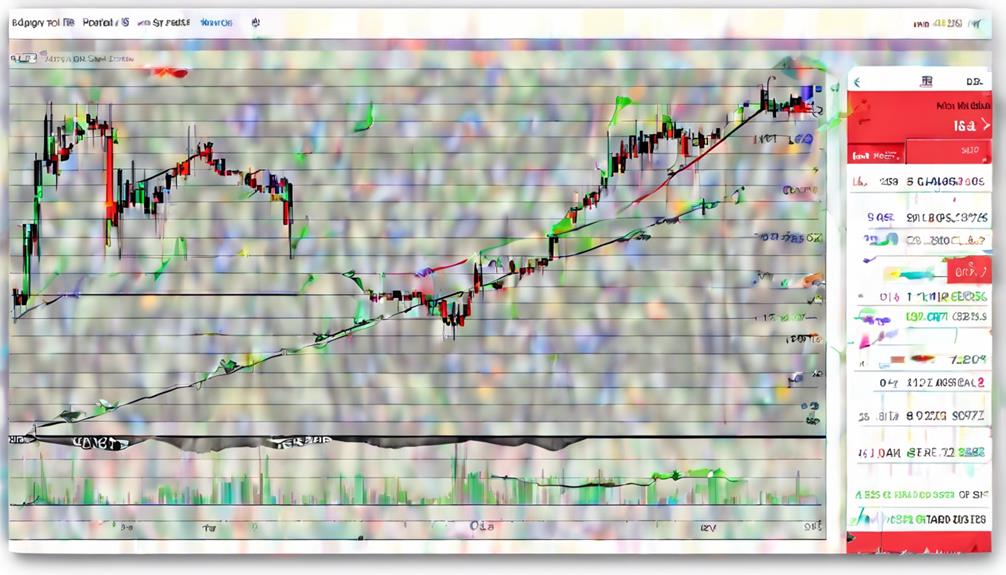
RSI serves as a valuable tool for confirming trends by examining price movements and identifying key levels indicative of bullish or bearish market conditions. When implementing RSI in trend confirmation, traders can follow these key principles:
- Look for RSI values above 50: RSI values above 50 can confirm a bullish trend, indicating strength in the market momentum.
- RSI below 50 signals a bearish trend: RSI values below 50 suggest a bearish trend, highlighting potential weakness in the market direction.
- Combine RSI with other indicators: Integrating RSI trend confirmation with other technical indicators can provide a more thorough analysis of the market trends.
- Understanding RSI values is essential: A deep understanding of RSI values and their implications is vital for accurately confirming the direction of the trend based on price movements.
Calculating RSI for Trading Strategies
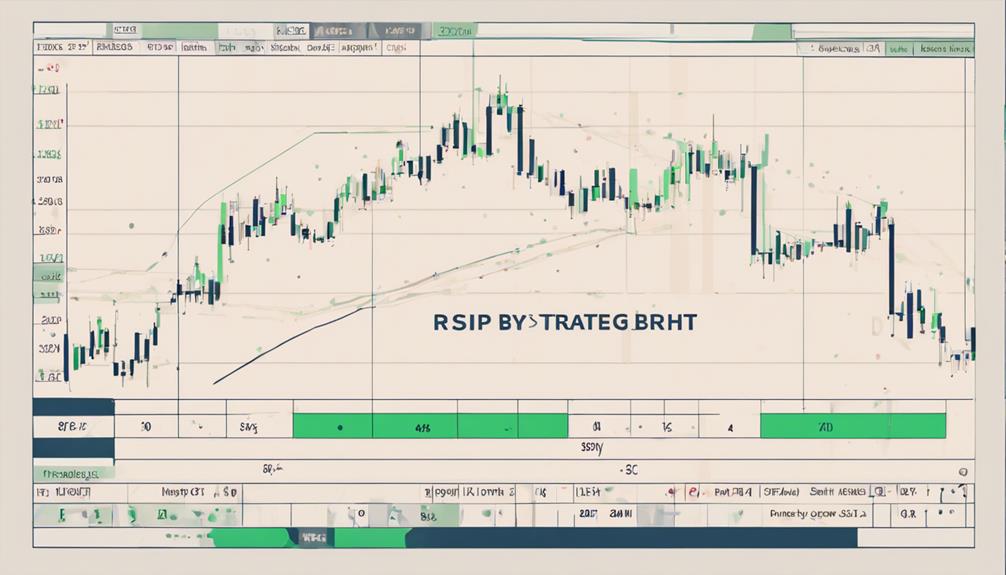
The calculation of the Relative Strength Index (RSI) for trading strategies involves analyzing average gains and losses over a specified period, commonly 14 days, to assess price momentum accurately. By utilizing historical price data, the RSI calculation aims to evaluate the relative strength of price movements. The RSI formula includes smoothing techniques to provide a more precise representation of price momentum, essential for traders seeking to make informed decisions.
RSI values oscillate between 0 and 100, with levels above 70 considered overbought and levels below 30 indicating oversold conditions. Understanding the intricacies of RSI calculation is paramount for traders looking to implement effective trading strategies based on RSI signals. Mastery of RSI calculation equips traders with the necessary tools to gauge price momentum, identify potential trend reversals, and make timely trading decisions.
Incorporating RSI into trading strategies can enhance market analysis and improve overall trading performance.
Combining RSI With Other Indicators
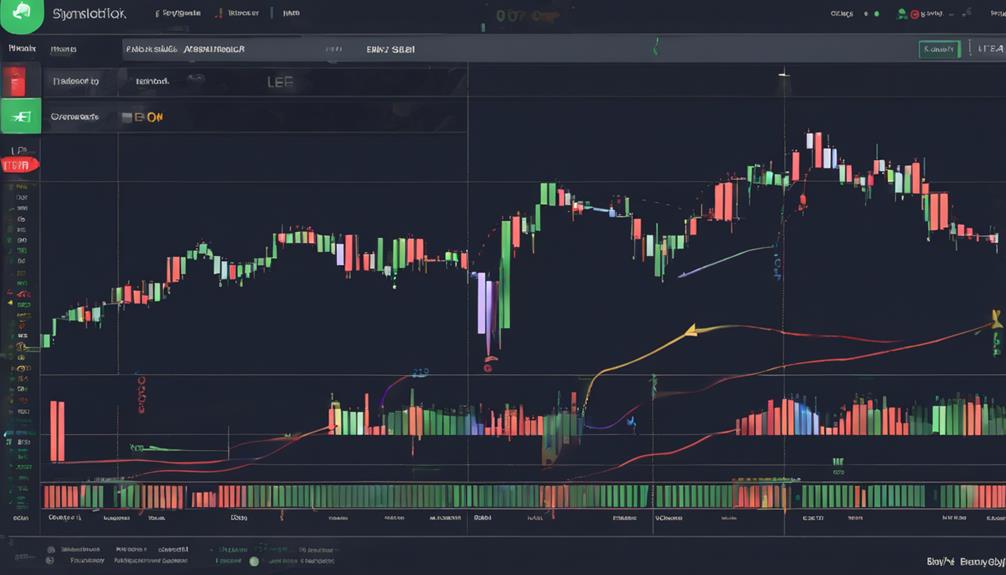
Incorporating RSI with various complementary indicators can greatly enhance the depth of analysis in trading strategies.
When combining RSI with Moving Average, traders can benefit from confirmation of trade signals. Additionally, utilizing RSI alongside MACD helps to validate trend strength and momentum.
Integrating RSI with Fibonacci retracement levels enhances the analysis of support and resistance levels, providing valuable insights into potential price movements.
Moreover, pairing RSI with Volume indicators offers a thorough view of market participation, confirming price trends with trading volume dynamics.
By overlaying RSI with Ichimoku Cloud, traders can effectively identify trend directions and potential reversals, adding another layer of insight to their technical analysis toolkit.
This strategic combination of RSI with Moving Average, MACD, and other indicators empowers traders to make well-informed decisions based on a detailed analysis of market dynamics.
Strategically Placing Stop-Loss Orders
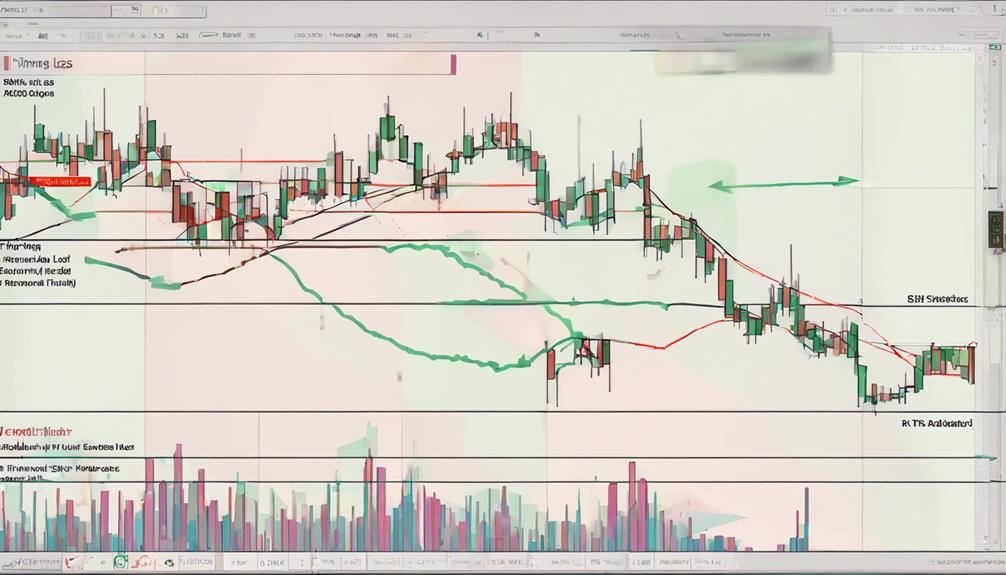
Implementing strategic stop-loss orders is essential in risk management for traders maneuvering through volatile market conditions. Placing stop-loss orders based on RSI bands can help traders safeguard their trading capital during market fluctuations.
By utilizing RSI bands to identify key support levels, traders can determine ideal placement for their stop-loss orders, minimizing potential losses. Additionally, incorporating RSI bands when setting stop-loss orders can assist in avoiding emotional decision-making, particularly in highly volatile markets where impulsive actions may lead to significant losses.
Adjusting stop-loss levels according to signals from RSI bands further enhances risk management strategies, allowing traders to adapt to changing market conditions efficiently. Integrating RSI bands with stop-loss orders provides a systematic approach to managing risk and protecting investments, creating a structured framework for traders to navigate the complexities of the financial markets with more confidence and control.
Frequently Asked Questions
How Do You Master Rsi?
To master RSI indicators, focus on understanding trading techniques that involve interpreting overbought and oversold conditions. Conduct thorough market analysis to identify potential entry and exit points based on RSI signals.
Adjust RSI settings to match the market's volatility and timeframe for accurate readings. Utilize RSI in conjunction with other technical indicators for confirmation.
Practice historical data analysis and backtesting to refine trading strategies utilizing RSI effectively.
What Is the 70 30 RSI Strategy?
The 70 30 RSI strategy is a popular method that relies on identifying overbought and oversold conditions in the market. By setting RSI thresholds at 70 and 30, traders can pinpoint potential trend reversals.
This strategy helps in managing risks by signaling entry points when RSI crosses these levels. Confirmation signals through price action further enhance decision-making, aligning trades with market sentiment.
Incorporating the 70 30 RSI strategy can improve trading outcomes through disciplined analysis.
Do Professional Traders Use Rsi?
Professional traders widely adopt RSI for its accuracy in identifying market conditions. Institutional traders utilize RSI to gauge overbought or oversold levels, aiding in timely trade entries.
RSI finds application in conjunction with other indicators to enhance trading signals. Its versatility allows for valuable insights into market momentum and potential reversals.
Relying on RSI, professional traders make informed decisions and effectively manage risk, highlighting the essential role RSI plays in professional trading strategies.
What Is the Best Strategy for RSI Day Trading?
When considering the best strategy for RSI day trading, it is important to focus on scalping techniques for quick profits. Trend identification is crucial for maximizing gains, and rigorous risk management strategies are essential to protect capital.
Conclusion
To sum up, mastering RSI bands can greatly enhance trading strategies by providing valuable insights into market conditions and price movements. By effectively interpreting RSI readings, identifying overbought and oversold conditions, utilizing divergence signals, and incorporating RSI into trend confirmation, traders can make more informed decisions.
The strategic combination of RSI with other indicators and the careful placement of stop-loss orders can further optimize trading outcomes. Overall, a thorough understanding and application of RSI bands can lead to improved trading performance.


